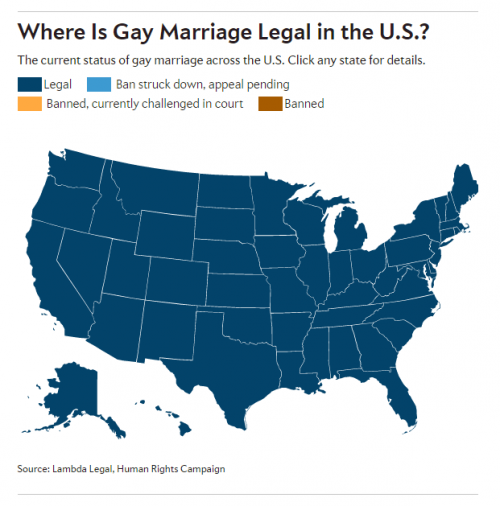On June 26th, 2015, the United States Supreme Court ruled that bans on same-sex marriage violate the 14th Amendment of the Constitution. This is your image of the week:
 Source: Slate.
Source: Slate.
Lisa Wade, PhD is an Associate Professor at Tulane University. She is the author of American Hookup, a book about college sexual culture; a textbook about gender; and a forthcoming introductory text: Terrible Magnificent Sociology. You can follow her on Twitter and Instagram.










